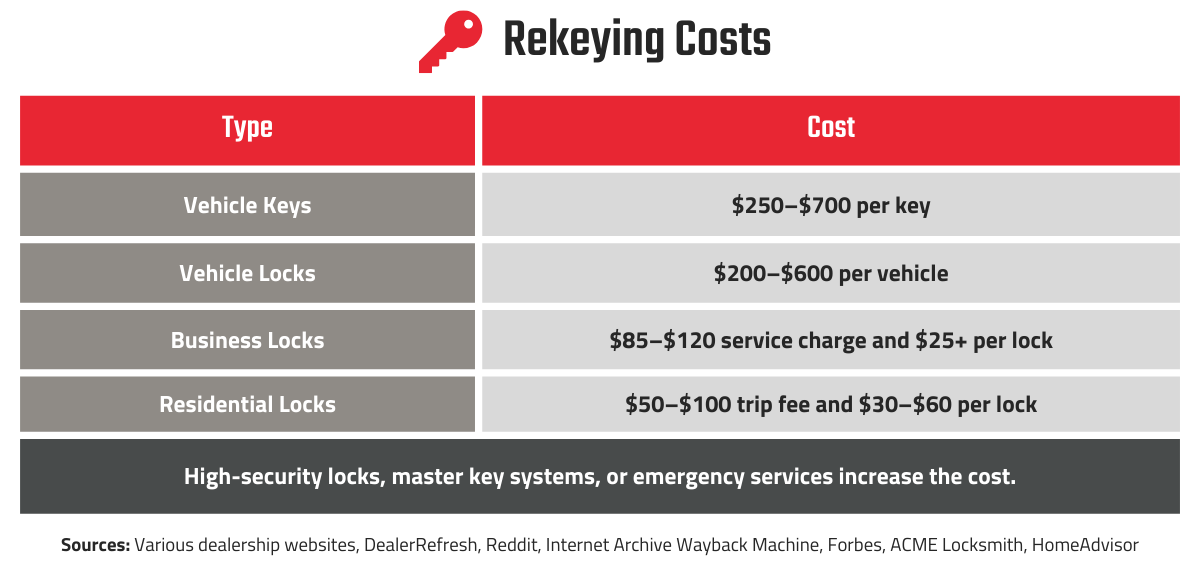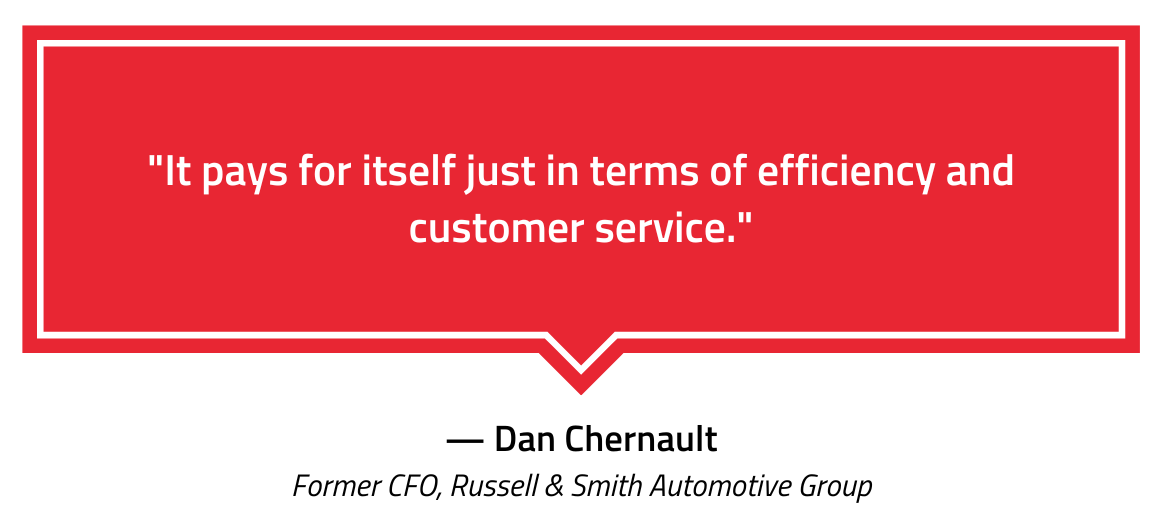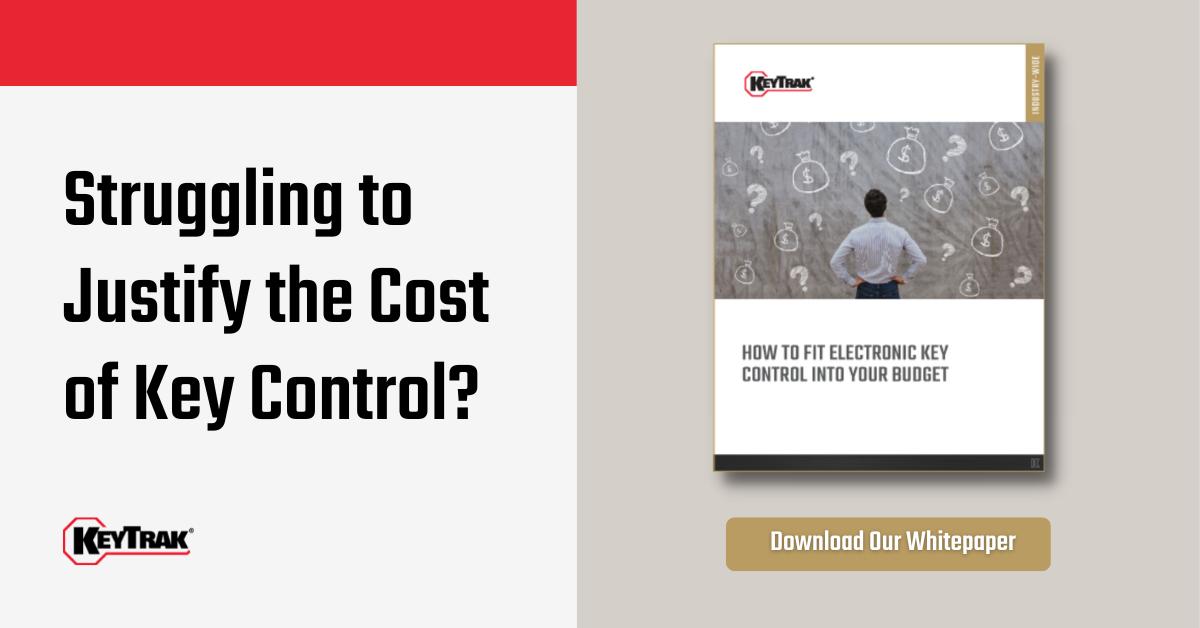How much should you invest in electronic key control systems? The initial investment might be a barrier to adoption for your organization, but a single lost key can lead to major security risks and unexpected costs. Key control technology will mitigate these risks and enhance your organization’s overall security. To help you with your cost-benefit analysis, let’s look at the best way to determine the ROI of electronic key management.
1. Understand the Pricing of Electronic Key Control Systems
Key control technology providers have different cost structures, so it’s important to understand the breakdown of the quotes you receive. Some vendors charge a flat rate for standardized solutions, while others, such as KeyTrak, provide customizable systems with tailored pricing. Here are the main elements that affect your key control investment:
Hardware
The biggest cost component is the system hardware, which includes:
- Drawers
- Key panels
- Cabinets
- Monitors
- Accessories (fingerprint readers, driver’s license scanners, etc.)
To get an accurate quote, determine how much capacity you need and how much space you might need to add in the future. Also, find out what hardware accessories (like fingerprint readers) are included with your purchase.
Software
As with most commercial software, key control systems have software licenses that renew periodically (typically each year). Some have tiered plans based on a certain number of locations, users, or keys. Others, like KeyTrak, are more straightforward, with one standard license per system. When evaluating the cost, make sure you’re aware of any variables that might affect licensing costs.
Installation
Any key system quotes you receive should list installation fees. If they’re not included, ask if the company provides that service and how much it costs. Some vendors require self-installation, in which case you’ll need to account for the time and resources necessary to set up the system yourself.
Training
To get the most return from your investment, training is critical. However, key control providers approach onboarding differently. KeyTrak, for example, includes on-site training in the system cost, while others charge extra and may only offer remote training.
Ongoing Maintenance Costs
To keep your system up and running, it’s important to:
- Run regular software updates.
- Troubleshoot any hardware or software issues promptly.
- Keep your key tagging supplies stocked.
Most systems come with a warranty of some kind, but be aware of how long it lasts and what it covers. When the included coverage ends, look into the cost of pay-as-you-go support versus an extended support plan. In return, you'll benefit from predictable support costs and perks such as supplies discounts.
By understanding the purchase price and any ongoing expenses, you’ll get a more accurate picture of the ROI of key control technology. But that's only part of the equation.
2. Quantify the Business Impact
When calculating the ROI of any technology, it’s important to factor in how it mitigates risks and adds value to your business. Here are some common challenges associated with nonexistent or manual key control processes:
Lost or Stolen Keys
Rekeying costs can set your organization back thousands of dollars each year. Dealerships, for example, can easily spend over $24,000 a year on replacing keys. But even if losing keys isn’t a typical occurrence, a single incident can incur six figures or more in remediation costs. One university estimated it would spend at least a million dollars to address a physical security incident involving a lost set of master keys.
But the question you need to answer is: How much could rekeying cost your organization? Using the chart below, multiply the number of keys you manage by the average rekeying cost in your industry to estimate the potential annual loss.

Security Breaches, Lawsuits, and Compliance Fines
Consider the cost of any potential security breaches, lawsuits, or compliance fines that could be linked to inadequate key control. While it’s difficult to predict the exact cost, a single incident can come with astronomical costs. For the purposes of calculating ROI, use benchmarks in your industry.
For example, one dealership’s lax key control practices led to a $277,662 lawsuit after an employee caused an accident in one of the dealership’s vehicles. In the medical industry, medical facilities can face fines of millions of dollars for lax controls and lack of reporting that lead to security breaches.
Business Efficiency
Beyond improving security and mitigating risk, electronic key control systems can help you maximize one of your most valuable resources: your employees’ time. Traditional key management is more prone to errors and time-consuming manual steps. With electronic key management, features like mobile apps, fingerprint readers, and automated logs save employees time wasted searching for keys, managing manual key control processes, and auditing keys.
“One of the things I like the most is when you’re putting keys back, you don’t have to search for the correct place to put it,” said Guy Andrew, a property manager at Parkfairfax Condominium Association, a KeyTrak customer. “You just log in with your fingerprint, alert the system you’re putting a key back, and place it in any spot. We’re taking 10 seconds to do that now as opposed to a much longer time with a standard key cabinet.”
This efficiency translates to real cost savings. By spending less time on key control tasks, employees will be able to focus on other core responsibilities, whether it’s closing deals, responding to work orders, or simply providing better customer service. To determine how much key management technology can save your organization, estimate the average number of employees who regularly need keys and the potential time saved per day and week.

Now that you've established both the cost of the system and business impact, let’s look at how to calculate your ROI.
3. Calculate ROI
To get a detailed calculation of the value of key management technology, use the Association for Financial Professionals’ return on security investment method. It consists of three formulas:
- ROI = (Security Cost Avoided - Cost) / Cost
- ROI = (Annual Loss Expected * Mitigation Rate - Cost) / Cost
- ROI = [($Single Loss Expectancy * Annual Rate of Occurrence) * Mitigation Rate - Cost] / Cost
The numbers in this formula are defined as follows:
- Security Cost Avoided: The potential financial losses the system prevents, such as rekeying costs, legal fees, and reputation damage after a security breach caused by a lost key.
- Single Loss Expectancy: Average cost to recover from a single incident. These are the business impact costs you determined earlier.
- Annual Rate of Occurrence: How often such incidents might occur. If your organization has a history of security incidents related to poor key control, you can use historical data. Otherwise, use your best estimate.
- Mitigation Rate: How effective the electronic key control system is, based on improvements in either of the above factors. This rate will vary based on the type of key control system, how it’s implemented, and the organization type. The more advanced security features the system has, the more you can expect the rate to increase. Start with 75% to 80% and adjust as needed in the future.
- Cost: The cost to run the system annually, including hardware costs, software licenses, installation fees, and maintenance costs.
Depending on the frequency and cost of security events your organization experiences, you might find that a typical year’s avoided security costs don’t fully offset the system’s expense. However, this doesn't necessarily mean key control is a poor allocation of funds. Just like insurance, you might not always profit financially, but mitigating the risk of a single catastrophic incident justifies the investment.
Additionally, the system offers intangible benefits like improved overall security posture, streamlined key management, and time saved by employees searching for keys. These factors contribute to a more secure and efficient workplace, making the investment valuable despite the initial number.
By understanding the true cost of electronic key control systems, along with the potential financial losses they prevent, you can make an informed decision about how much to invest in improving your organization’s key security.



